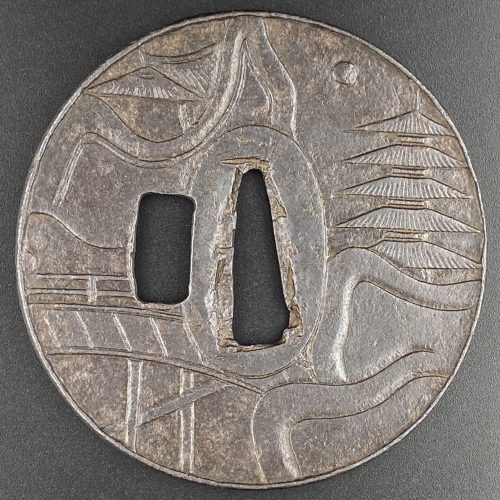Iron tsuba of round form decorated with design of sea waves in low relief carving (
kebori) and pierced with design of cherry blossom in negative silhouette (
in-sukashi) and water wheel in positive silhouette (
ji-sukashi). The solid portion of the plate has a shallow groove just before the edge. Copper sekigane.
School attribution is unclear. Unsigned.
Momoyama period, 16th - 17th century.
Dimensions: Height: 70.3 mm, width: 71.1 mm, thickness at
seppa-dai: 4.4 mm, at rim 4.1 mm.
Provenance: Robert E. Haynes, Mark Weisman.
This is what
shibuiswords.com says about this tsuba:
"A very unusual iron plate tsuba. The solid plate is carved with waves on both sides. A cherry bloom in sukashi, lower left, and the right third of the plate in openwork with design of a water wheel. The rim with some iron bones. The hitsu-ana is original but the shape may have been slightly changed. One would expect this to be the work of the early Edo period, but the age of the walls of the sukashi would suggest that this is a work of the middle Muromachi period. This must be the forerunner for the Edo examples we see of this type of design." (Haynes)
I managed to find a look-a-like tsuba in Haynes Catalog #5, 1983, pp. 20-21, №44: "Typical later Heianjo brass inlay example. Ca. 1725. Ht. 7 cm., Th. 4.5 mm., $100/200".
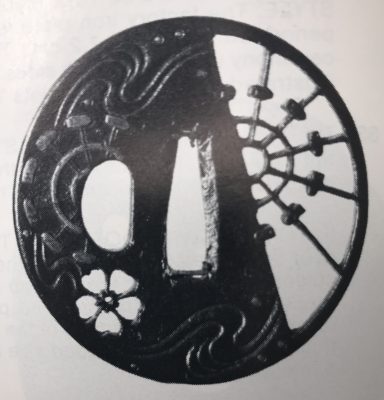
Haynes Catalog #5, 1983, pp. 20-21, №44.
We see that the plate design of both tsuba is the same, and the only difference is the trim. It would be logical to assume that both pieces were made at about the same time, rather than 225 years apart. To be fair, let's accept that they were made in Momoyama period.









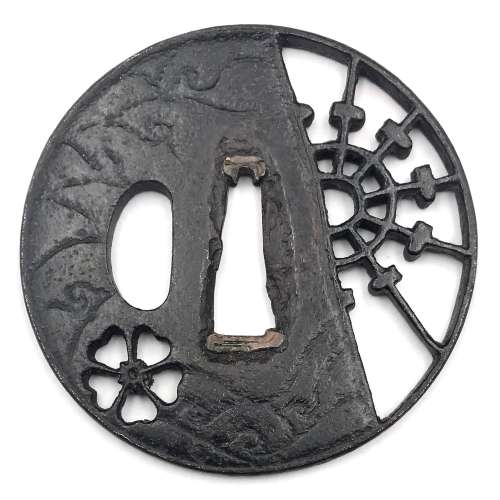


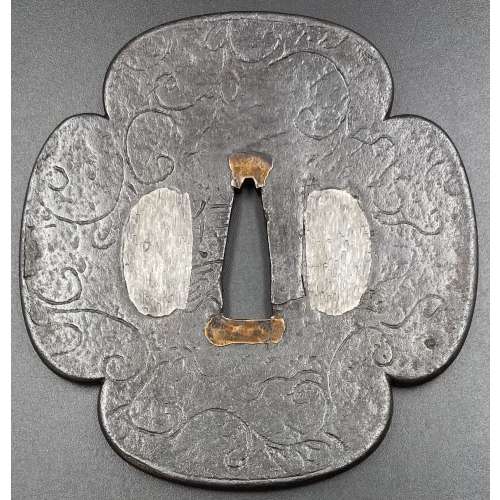





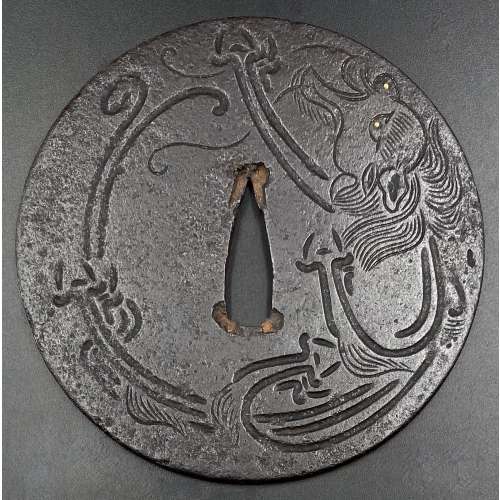

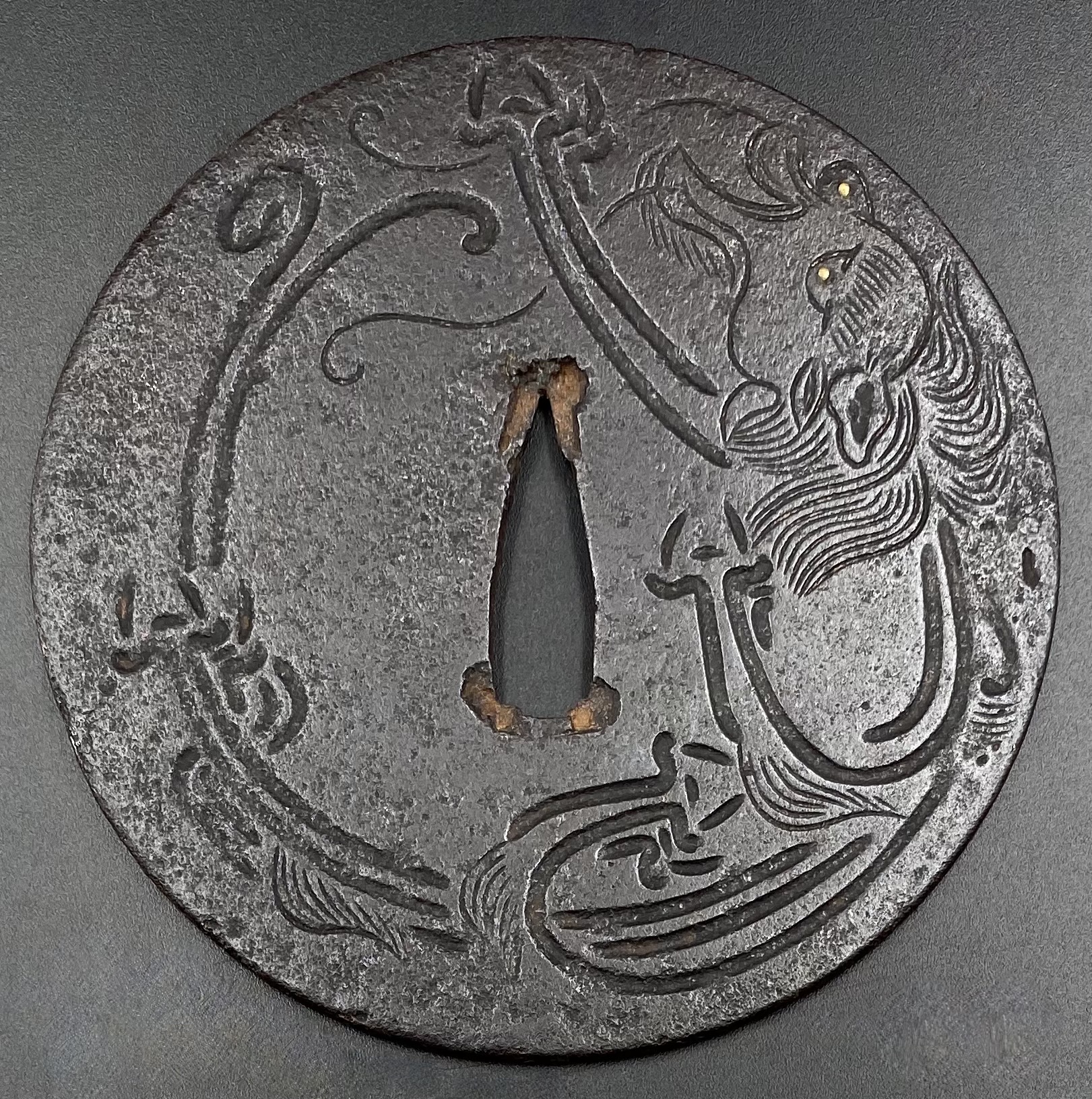 Two other examples of the same design may be found at: (1) Christie, Manson & Woods auction sales “Kotetsu”, 1980, page 12, №10 and (2) Professor A. Z. Freeman and the Phyllis Sharpe Memorial collections №36, pp. 18-19. Both have raised mimi, the latter classified as Katchushi tsuba.
More about
Two other examples of the same design may be found at: (1) Christie, Manson & Woods auction sales “Kotetsu”, 1980, page 12, №10 and (2) Professor A. Z. Freeman and the Phyllis Sharpe Memorial collections №36, pp. 18-19. Both have raised mimi, the latter classified as Katchushi tsuba.
More about 



